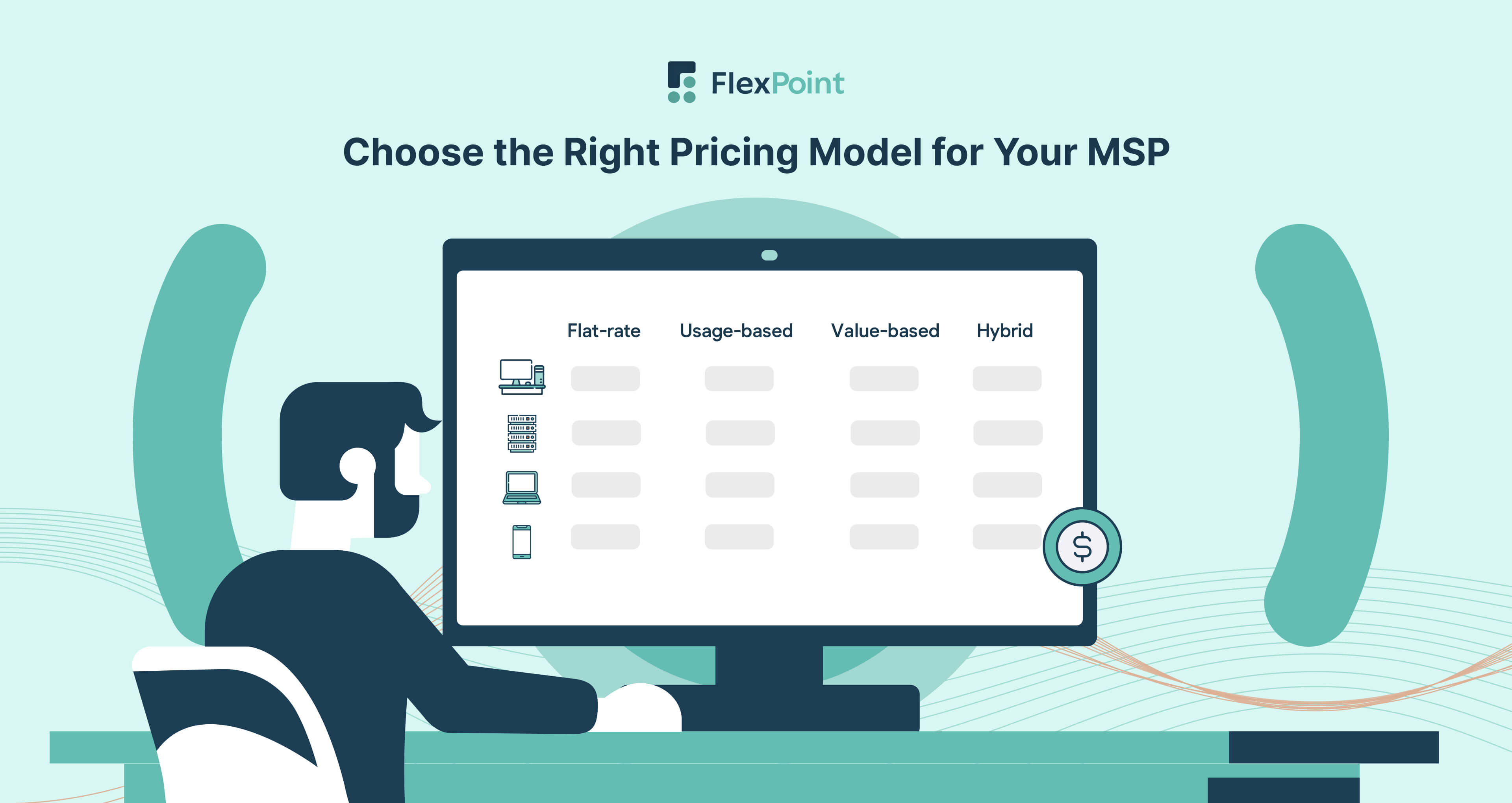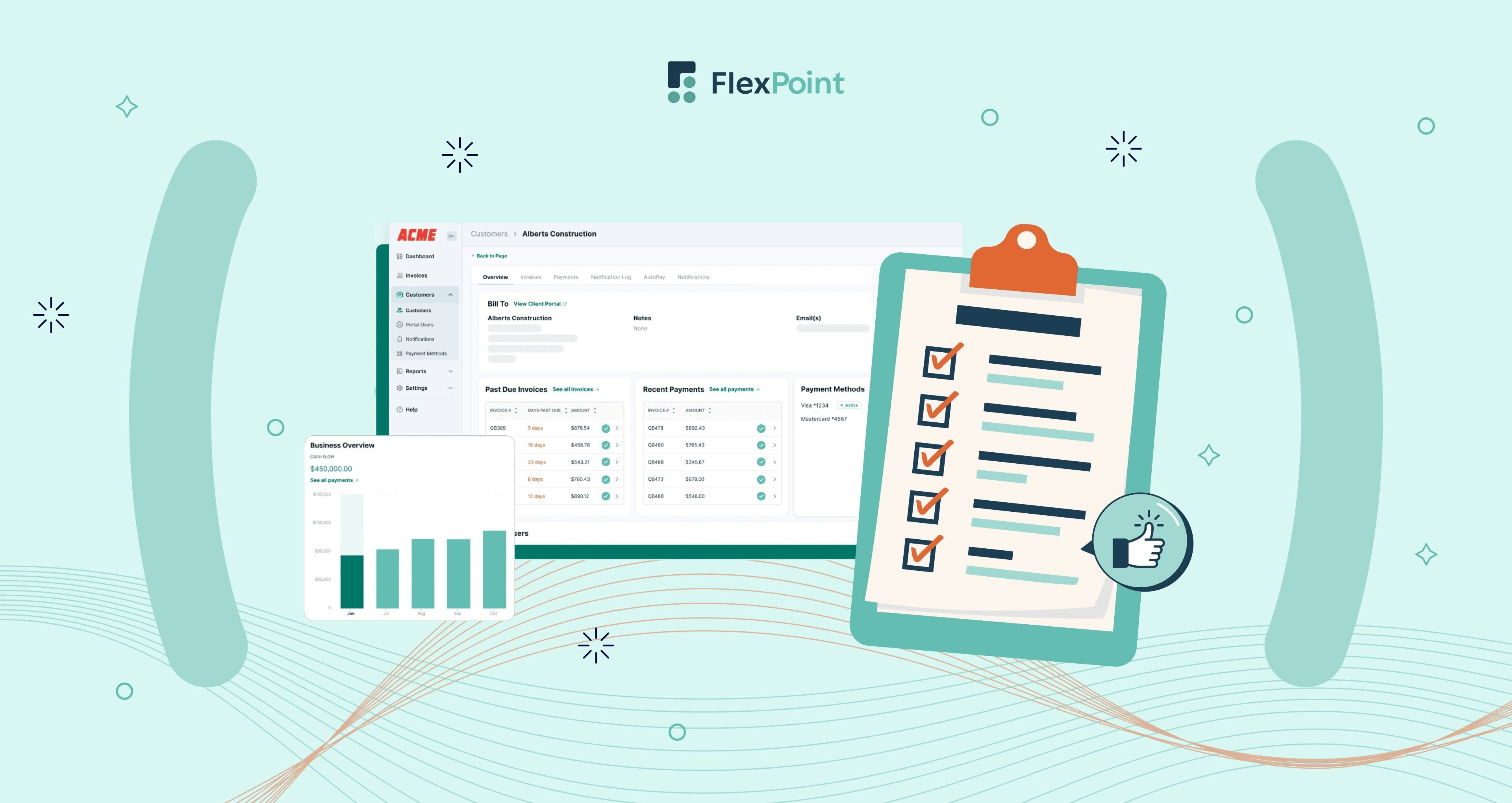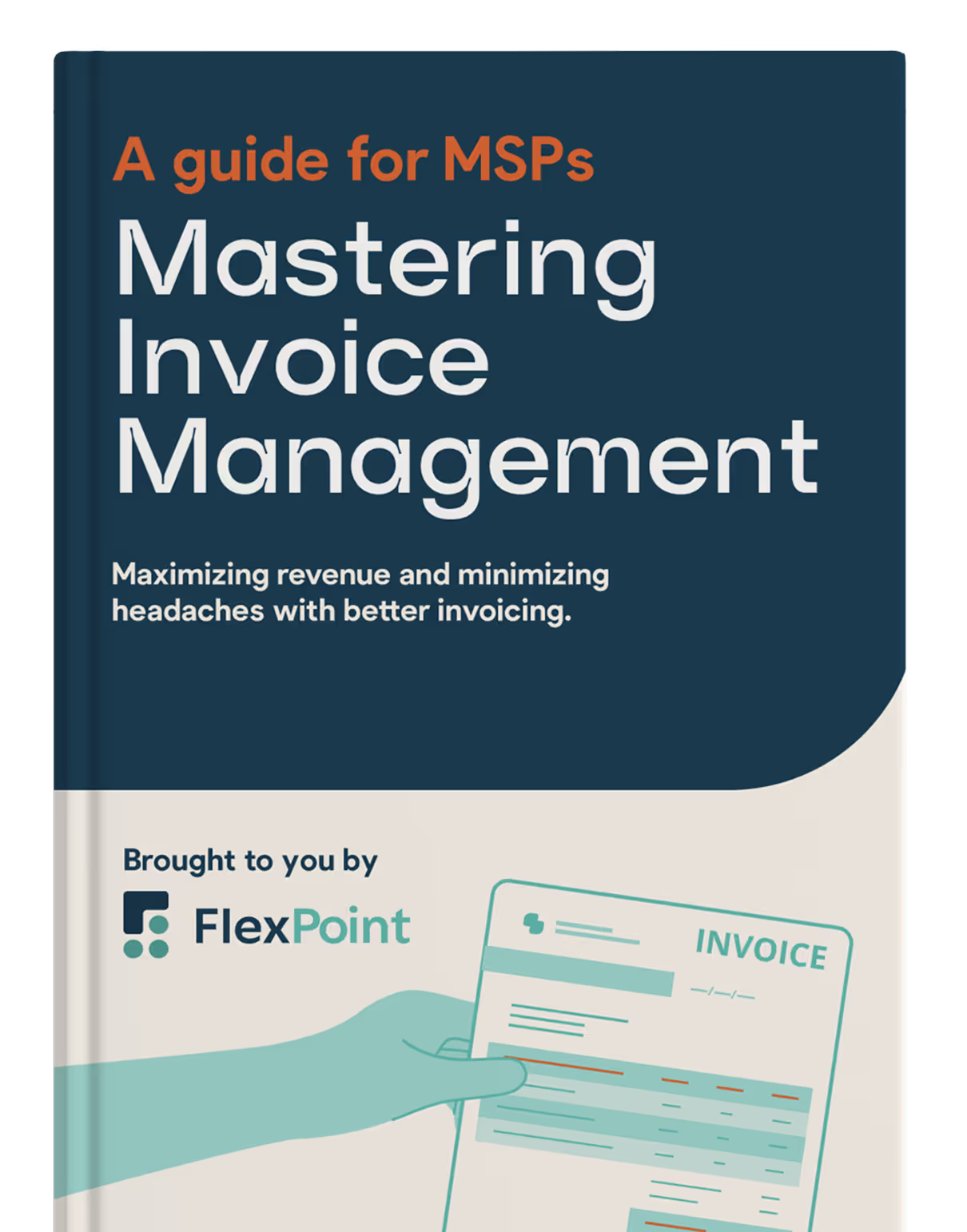MSP Monitoring-Only Pricing Explained: When and Why to Offer It
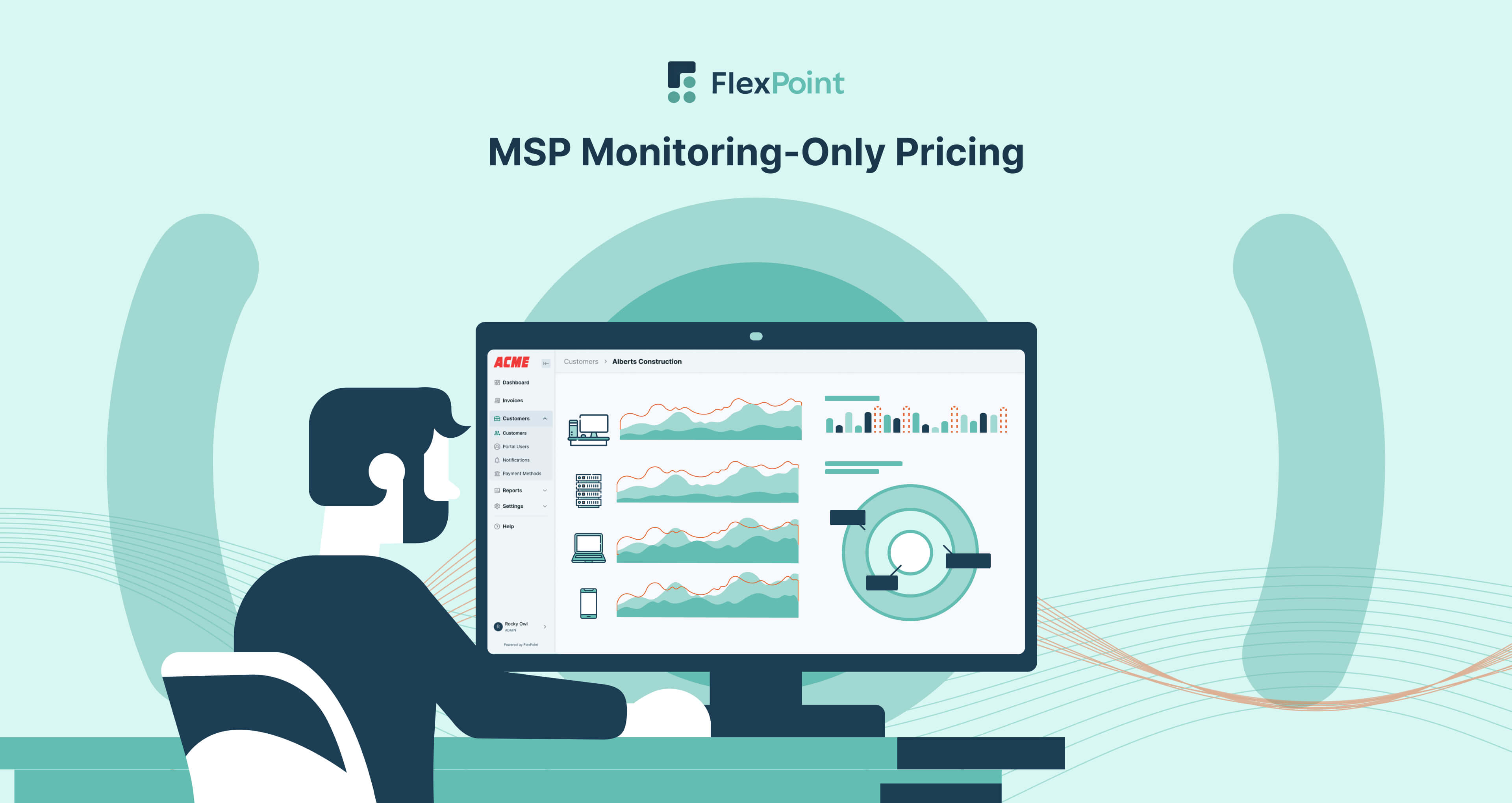
Managed Service Providers (MSPs) are under growing pressure to offer pricing flexibility without compromising profit or service quality. As businesses demand customized service tiers, many MSPs are considering monitoring-only pricing as a strategic way to serve clients who want visibility but not full support.
Monitoring-only plans provide clients with real-time oversight of their systems, such as servers, networks, or cloud environments, without hands-on remediation. These services alert clients to potential issues, but any response work is either handled internally or billed separately. This lower-touch model works particularly well for small businesses with limited budgets or companies that already have internal IT teams.
However, it’s not a one-size-fits-all model. Some MSPs use monitoring-only pricing to establish entry points with clients who are skeptical or cost-conscious. Others use it to support co-managed IT relationships. Done well, it can build trust, create upsell opportunities, and open doors to new market segments.
In this article, we cover what monitoring-only pricing entails, where it is most effective, and how to structure it for clarity and profitability.
We will also explain how an MSP-specific payment automation platform can streamline billing, track client usage, and support scalable pricing across service tiers, helping MSPs offer this billing model with confidence and precision.
{{toc}}
What Is Monitoring-Only Pricing in MSP Services?
Monitoring-only pricing is a service model where the MSP provides system oversight but does not include remediation in the monthly fee. The goal is to detect problems and notify the client, rather than resolve the issue directly unless additional work is approved and billed separately.
Typical services in a monitoring-only plan may include:
- Device Health Checks: Continuous monitoring of servers, workstations, or network devices to identify issues such as low disk space, failed backups, or hardware degradation.
- Security Alerting: Detection and reporting of suspicious activity, antivirus alerts, failed login attempts, or firewall events that may signal a security threat.
- Network Monitoring: Tracking uptime, performance metrics, and connectivity across critical infrastructure, often including routers, switches, and internet gateways.
- Performance Thresholds: Alerts for resource usage spikes such as CPU load, memory consumption, or bandwidth utilization that may impact system stability.
- Automated Reporting: Summary reports are delivered on a weekly or monthly basis, providing insight into system performance and recurring issues.
- Alert Notifications: Real-time emails or SMS messages sent to the client or internal IT team when predefined thresholds are crossed.
This approach contrasts with fully managed services, which include ongoing support, patching, and helpdesk tasks. In a monitoring-only agreement, the MSP acts as a watchtower, delivering visibility and alerting without intervention.
Common use cases include co-managed IT environments, where internal teams rely on external monitoring for after-hours or critical alerts. It’s also used with small clients who aren’t ready for a full-service contract but want assurance that issues won’t go unnoticed.
Monitoring-only pricing is often billed per device or site and includes system alerts, basic reports, and performance dashboards. The exact inclusions vary. Some plans might bundle automated updates or monthly health summaries, while others focus solely on oversight and monitoring.
For MSPs, this model helps generate recurring revenue from low-touch clients. For clients, it offers budget-friendly protection without losing internal control. It’s a flexible tier that serves as either a standalone offer or a first step toward a full managed service relationship.
{{ebook-cta}}
Pros and Cons of the Monitoring-Only Pricing Model
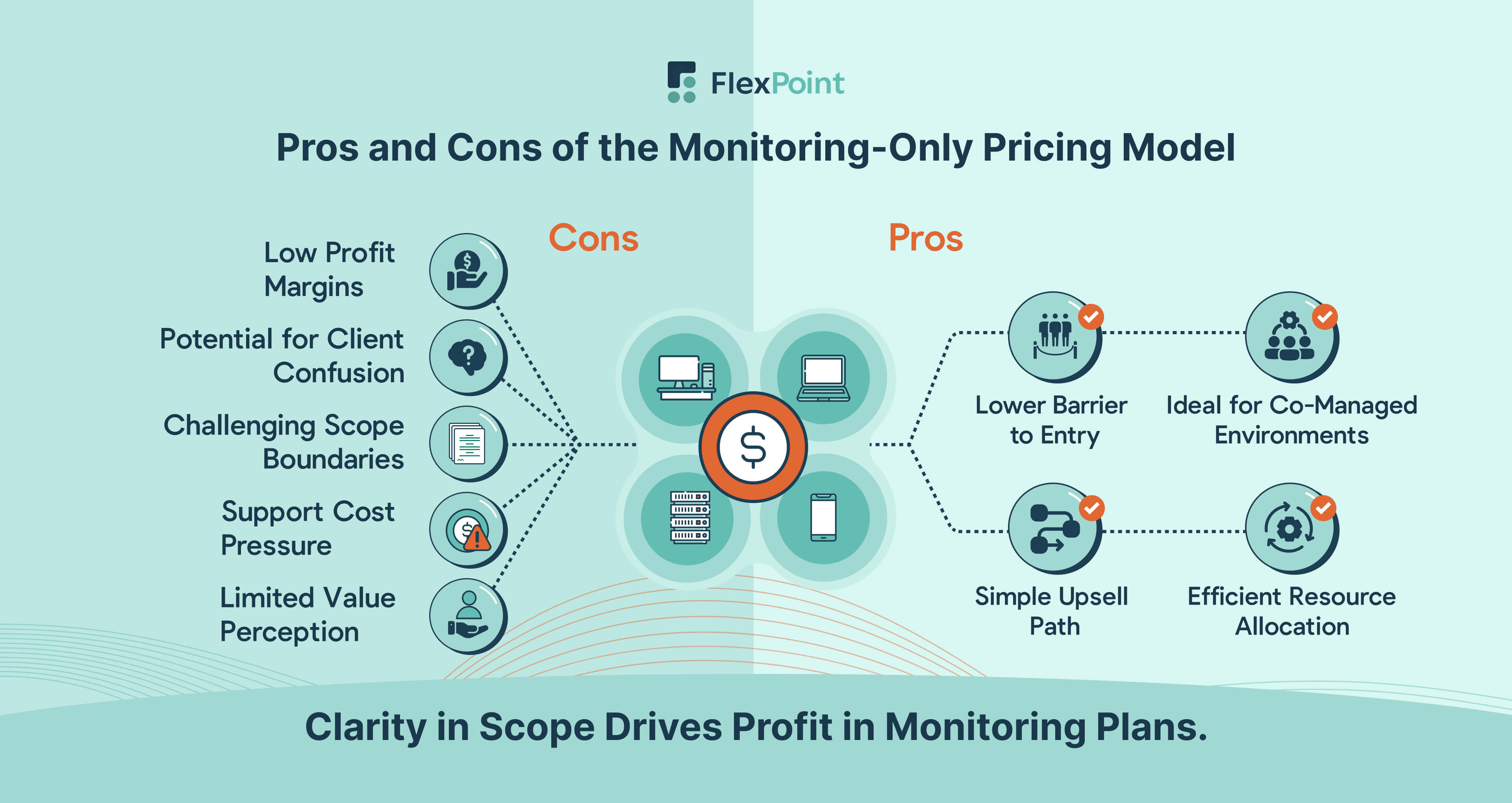
Monitoring-only pricing can offer distinct advantages for managed service providers, but it isn’t without trade-offs. Before introducing this model, MSPs should consider how it aligns with their overall service structure, client mix, and long-term objectives.
Below is a breakdown of both the benefits and challenges involved in offering this type of plan:
The Pros of Monitoring-Only Pricing:
- Lower barrier to entry: Monitoring-only pricing appeals to clients who want some oversight but can’t justify the cost of full support. It’s easier to sell than fully managed packages, especially in cost-sensitive industries. Clients appreciate the lower commitment.
- Ideal for co-managed environments: Internal IT teams often need support with visibility but prefer to manage incidents themselves. Monitoring-only plans allow MSPs to supplement internal teams without duplicating effort or stepping on toes.
- Simple upsell path: These plans naturally lead to upsells. Once a client experiences the benefit of alerts and reporting, they’re more likely to request additional support. That opens the door for full-service conversions.
- Efficient resource allocation: Since there is no obligation to resolve issues proactively, MSPs can serve more clients without scaling technician hours. Alerts are sent, but the MSP’s involvement ends there unless additional work is approved.
The Cons of Monitoring-Only Pricing:
- Low profit margins: These plans carry less revenue and often require high volume to justify tool and labor costs. Unless tied to a larger upsell strategy, they don’t contribute much to long-term growth.
- Potential for client confusion: Clients sometimes misunderstand the scope. They may assume the MSP will act on alerts or automatically resolve problems. Miscommunication can result in frustration and disputes.
- Challenging scope boundaries: Even with clear contracts, clients may expect “quick” help that falls outside the scope of the agreement. If the MSP regularly performs small favors, the plan quickly becomes unprofitable.
- Support cost pressure: When alerts are frequent or false positives occur, clients might complain, even though fixes aren’t included. It puts pressure on the MSP to defend the value of monitoring alone.
- Limited value perception: Some clients don’t immediately see the benefit of paying for alerts if no remediation is included. To justify the fee, MSPs must clearly communicate how monitoring prevents bigger problems and reduces risk.
Monitoring-only pricing is most successful when its scope is strictly defined and matched to the right audience. It can be a valuable component of a tiered pricing strategy, but it requires proactive communication and firm boundaries to remain profitable.
When to Offer Monitoring-Only Pricing
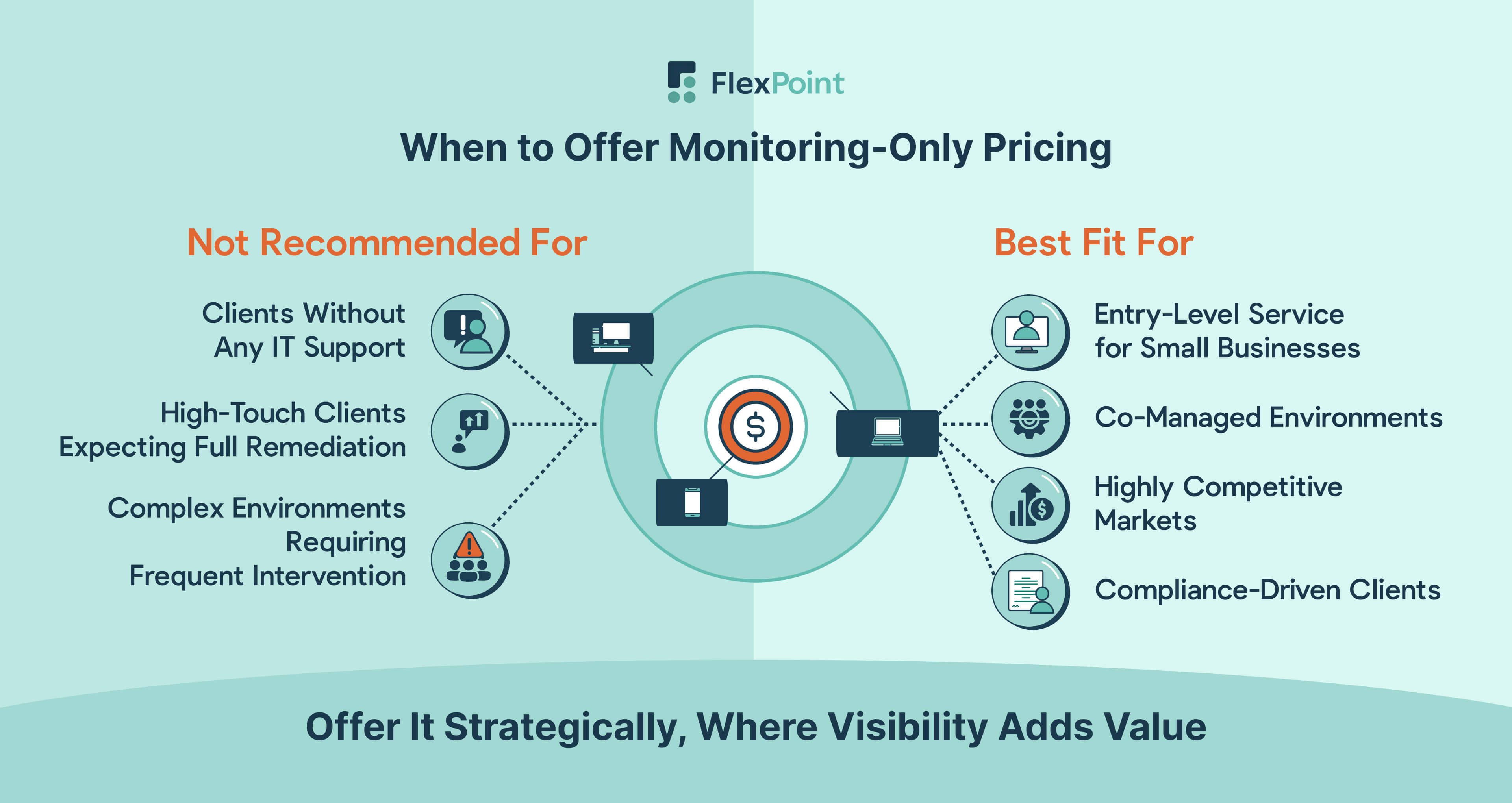
Monitoring-only pricing is most effective in specific, well-defined situations. It’s not a universal fit for every client, but when matched correctly, it can serve as a profitable, low-maintenance service tier.
Consider offering a monitoring-only plan in these situations:
- Entry-level service for small businesses: These clients often hesitate to commit to fully managed plans, either due to budget constraints or limited IT needs. Monitoring-only offers a middle ground: ongoing visibility without full-scale support. Once trust is built, these clients may convert to broader contracts.
- Co-managed environments: In this scenario, an internal IT team typically handles day-to-day issues but often lacks the necessary tools or resources for 24/7 monitoring. Usually, the MSP becomes an extension of the internal IT department, alerting staff to issues that might otherwise go unnoticed. This division of labor is efficient and mutually beneficial.
- Highly competitive markets: Offering a low-cost option, such as monitoring-only, can help MSPs stand out and get a foot in the door. For example, a monitoring plan might attract clients away from break-fix vendors or introduce recurring revenue from organizations that otherwise would go unmanaged.
- Compliance-driven clients: Some clients, particularly those in finance, legal, or healthcare, require system monitoring and reporting for audits or compliance requirements. They may not need support, just verifiable logs and documentation from a trusted third party.
Monitoring-only pricing is not recommended for:
- Clients without any IT capability or support structure: Businesses with no internal IT knowledge or technical staff may not know how to act on the alerts they receive. Even with system notifications, they may struggle to understand the next steps or delay critical decisions. Without someone on their team to respond, a monitoring-only plan leaves them exposed to downtime or unresolved issues.
- High-touch clients who expect full remediation: Some clients prefer to call or email for help as soon as something goes wrong, regardless of their service tier. These clients expect issues to be fixed quickly and may become frustrated when they realize that remediation isn’t included. Unless they fully understand and accept the limitations, they’re more likely to push boundaries and erode your margins.
- Complex environments requiring frequent intervention: Organizations with large networks, aging infrastructure, or legacy systems often require regular hands-on support. A monitoring-only plan won’t meet their needs, and frequent alerts can overwhelm both the client and your team.
How to Structure and Bill for Monitoring-Only Services
Clarity and simplicity are essential when building a monitoring-only plan.
Start with a clearly defined scope: which systems are monitored, what types of alerts are included, and what reporting is delivered. Be explicit about what’s excluded, such as remediation, patching, or helpdesk services.
Pricing should be consistent and predictable. Many MSPs bill monitoring-only services on a per-device, per-user, or flat monthly rate basis, depending on the asset count. For example, $50 per workstation and $100 per server per month. These rates account for the cost of RMM tools, licensing, and staff time required to monitor systems and respond to alerts when necessary.
Optional add-ons can increase value and provide upsell opportunities. Some MSPs offer prepaid hourly support, monthly system health reviews, or incident response bundles. These extras help tailor the plan without increasing the base rate.
To keep operations lean, automate as much as possible. A robust MSP billing automation platform ideally should support per-device, per-site, and flat-rate billing logic. MSPs can create service-specific invoice templates, automatically add time-and-materials charges, and customize payment terms to suit their needs.
With the right tools, monitoring-only pricing becomes easy to manage, even across dozens of clients.
Conclusion: Is Monitoring-Only Pricing Right for Your MSP?
Monitoring-only pricing can be a smart way to offer flexibility without overcommitting resources. For the right type of client—those who are budget-conscious, technically capable, or just getting started—it creates a point of entry that fosters long-term relationships.
This model also helps MSPs segment service tiers more effectively. Not every client needs full coverage, and some prefer the control of handling fixes in-house. Monitoring-only offers peace of mind while preserving internal workflows. It allows you to reach market segments that might otherwise go unmanaged.
That said, success depends on execution. Poorly scoped plans can backfire, causing confusion, dissatisfaction, or hidden labor costs. MSPs must ensure clients understand exactly what the service includes and what it doesn’t. Educating clients upfront, providing written service-level agreements (SLAs), and delivering consistent reports can help reinforce the value.
It’s also important to recognize that this model shouldn’t replace higher-tier plans; it should complement them. It works well as a short-term option, a pilot program, or a solution for specific use cases. But it may not scale well on its own without a strong upsell strategy or high volume.
FlexPoint helps MSPs manage these tiers with minimal friction. The platform’s automation tools support any pricing structure, thus making it easy to offer monitoring-only as part of a larger service catalog. Invoicing, reconciliations, and payment collection are all built into the platform. This enables MSPs to operate efficiently while still providing flexible services.
If you are an MSP looking to serve more clients without expanding technician hours, monitoring-only pricing is a viable option worth considering. Ensure that your internal systems can support the complexity and that your clients understand the limitations.
Thinking about offering monitoring-only pricing? FlexPoint makes it easy to bill and collect payments for any MSP pricing model, including monitoring-only tiers.
Automate invoicing, manage service tiers, and streamline your financial operations from a single platform.
Schedule a demo to see how FlexPoint supports flexible MSP billing.
{{demo-cta}}
Additional FAQs: MSP Monitoring-Only Pricing
{{faq-section}}



